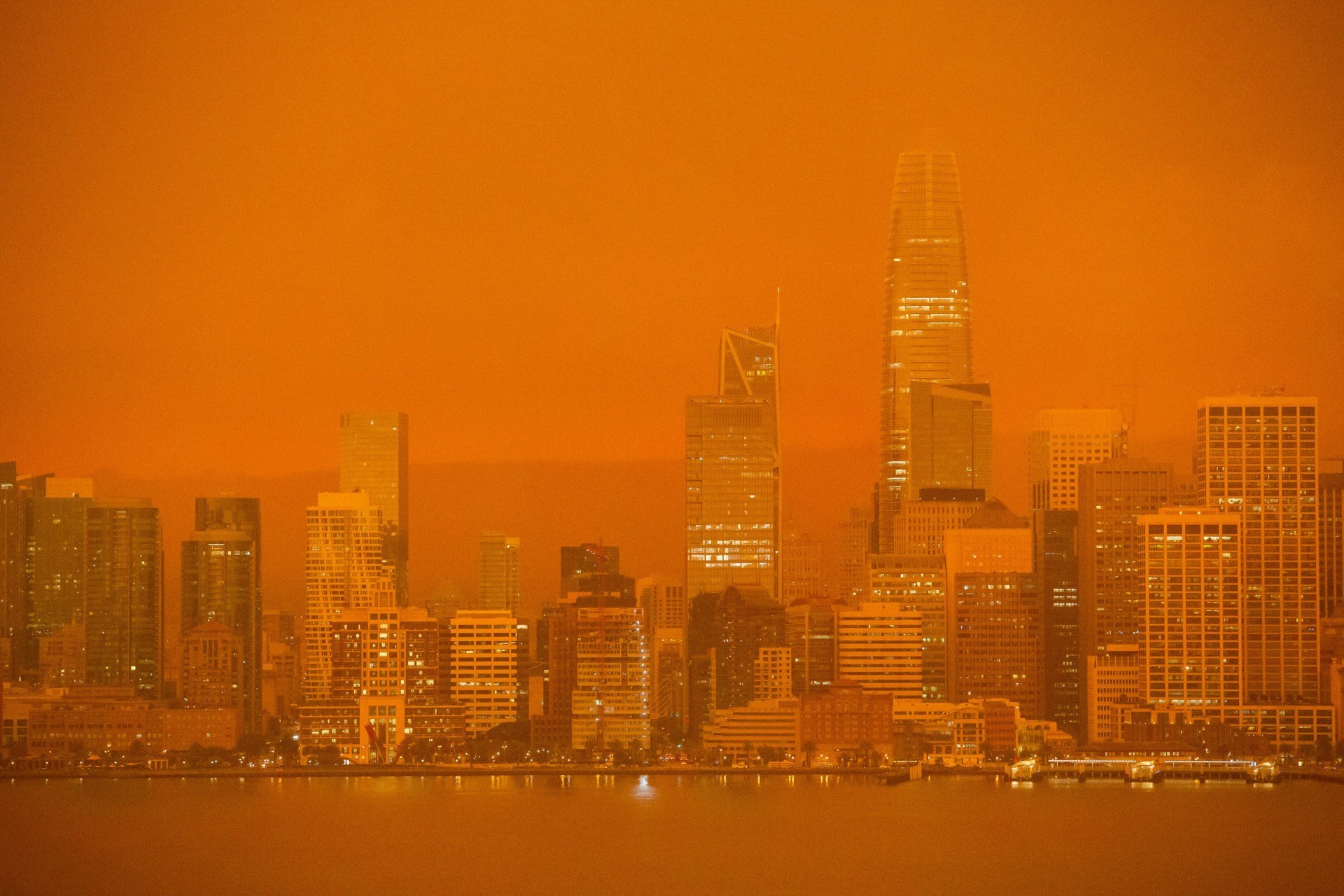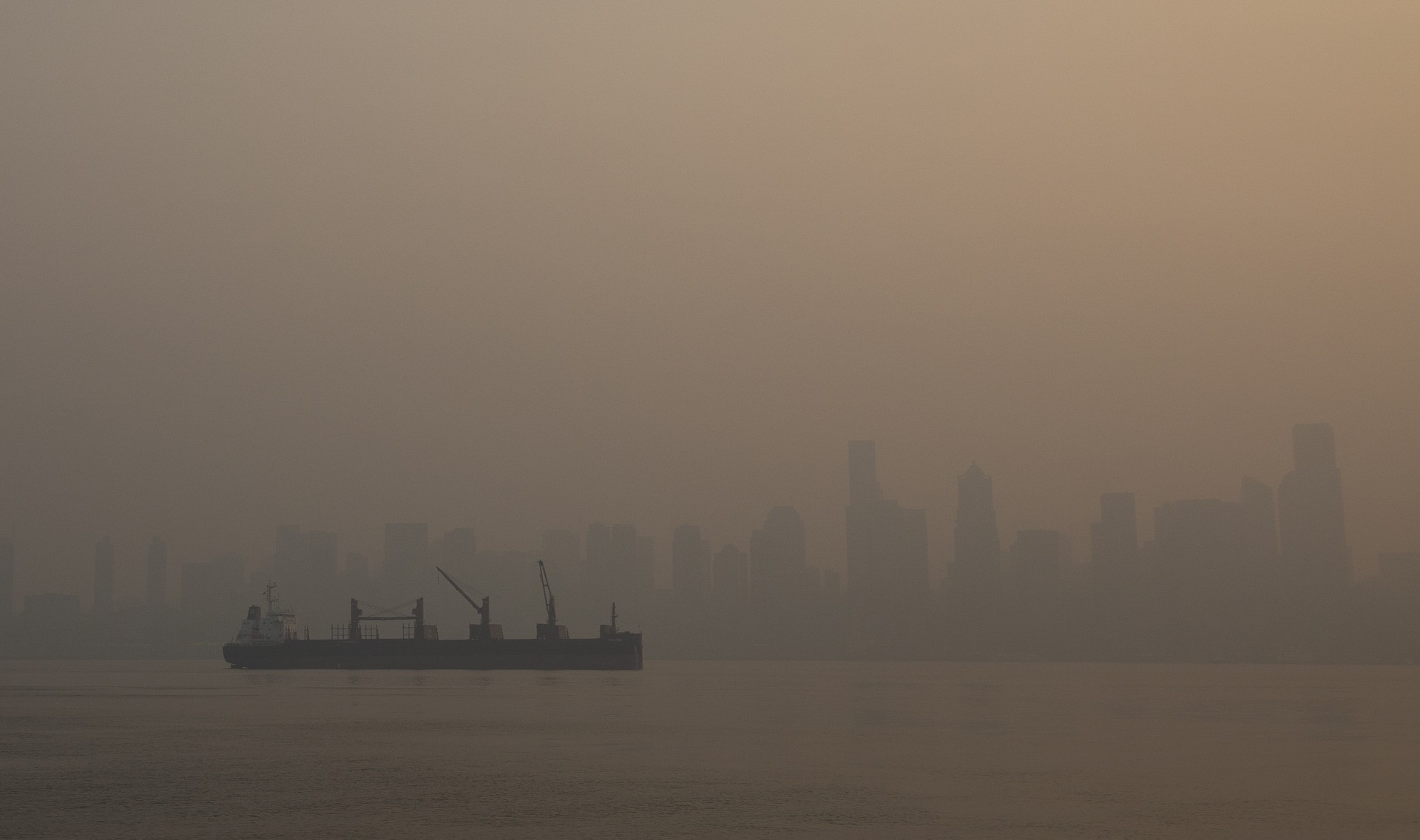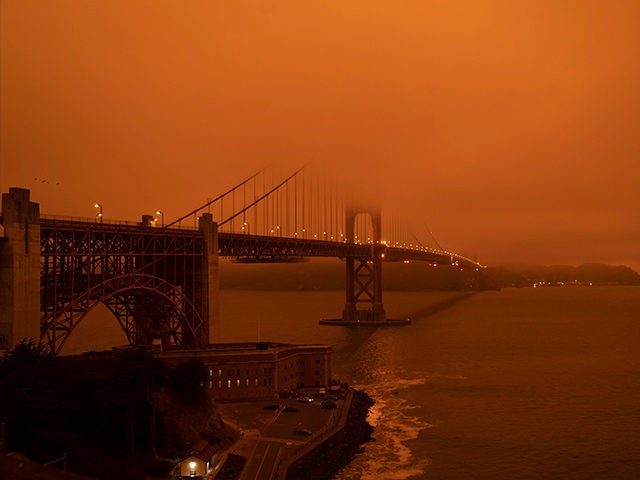Smoke pollution from wildfires raging in California and across the Pacific Northwest worsened in San Francisco, Seattle and Portland, Oregon, on Friday, giving those cities and others in the region the worst air quality in the world, according to IQAir.com.
Public health officials warned residents to keep indoors with the windows shut, to set air conditioners to run on recirculated air instead of fresh, and to use air purifiers if they had them. Meanwhile, they wrestled with whether to open “smoke shelters” for homeless people or others lacking access to clean air amid the COVID-19 pandemic and concerns about herding people indoors.
“The same population that is most vulnerable to the virus is also most vulnerable to the smoke,” Seattle Mayor Jenny Durkan noted during a news conference.
The sky turned a hazy, grayish white across the Northwest as winds that had previously pushed much of the smoke offshore shifted, bringing unhealthy levels of near-microscopic dust, soot and ash particles to Portland, Seattle, and Vancouver, British Columbia. San Francisco also continued to suffer from smoke pollution; those four cities topped the list of major cities with the worst air quality Friday, according to IQAir.com, which tracks air quality around the world.

The San Francisco skyline is obscured in orange smoke and haze as their seen from Treasure Island in San Francisco, California, on September 9, 2020. More than 300,000 acres are burning across the northwestern state including 35 major wildfires, with at least five towns “substantially destroyed” and mass evacuations taking place. (Brittany Hosea-Small/AFP via Getty Images)

A cargo ship is silhouetted in front of the Seattle skyline due to smoke from wildfires on the West Coast, as seen from West Seattle on September 11, 2020. According to reports, air quality is expected to worsen as smoke from dozens of wildfires in forests of the Pacific Northwest and along the West Coast descends onto the region. (Lindsey Wasson/Getty Images)
The particles are small enough that they can penetrate deep into the lungs, and health effects can include chest pain, arrhythmia and bronchitis. Those with preexisting conditions such as heart and lung disease or asthma are especially at risk.
In a news conference Friday, Washington Gov. Jay Inslee insisted on calling the blazes “climate fires” rather than wildfires.
“This is not an act of God,” Inslee said. “This has happened because we have changed the climate of the state of Washington in dramatic ways.”
Seattle ordered parks, beaches and boat ramps closed through one of the last hot weekends of the summer to discourage outdoor recreation, and officials were opening a clean air shelter Friday afternoon that can hold 77 people. The facility, which had been set up as an overflow COVID-19 care facility, is large enough to allow for social distancing, they said.
San Francisco officials were also opening “weather relief centers” that will stay open through the weekend, said Mary Ellen Carroll, director of the city’s Department of Emergency Management. City buses were free for everyone so those who need to can reach the centers.
Much of California was covered by a thick layer of smoke being pumped into the air by dozens of raging wildfires. In San Francisco, the gray air smelled of burned wood and visibility was clouded by “very unhealthy” air, according to the Bay Area Air Quality District.
Residents were also asked to avoid activities that could further degrade the air quality, including unnecessary driving, lawn mowing, and barbecuing.
Working in University Place, a Tacoma suburb, Washington state Department of Ecology spokesman Andy Wineke said the smoke had obliterated his typical view of the Olympic Mountains.
“I can barely see my neighbor,” he said.
The Associated Press contributed to this article.

COMMENTS
Please let us know if you're having issues with commenting.